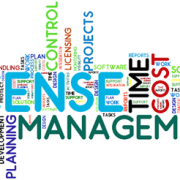Best practices for software license management
Software license management is the process that ensures that the legal agreements that come with procured software licenses are adhered to.In a basic sense, it ensures that only legally procured licenses are deployed on systems.
Organizations spend a fortune on licenses every year, and a lack of management around it can result in heavy fines. In some cases, CIOs of certain organizations have been taken into custody for violating norms.
In this article, I will provide the basic concept of how software license management works along with a process map.
Prerequisites for implementing license management
1. Software Asset Management Tool – Organizations will have to invest in database software that is capable of recording various types of licenses against its respective owners. There are numerous software asset management tools available in the market, including free ones. All-in-one database tools are capable of storing deployment details of software along with license details. Popular ones on the market include FlexNet Manager by Flexera Software, Software Asset Management by Microsoft and License Manager by License Dashboard. To find a reliable vendor click here to find out more.
2. Software License Auditor Tool – The auditor tool runs over the company network, and identifies the deployed licenses across all systems of the network. The tool deploys its agents across all systems and in turn, these agents report the installed licenses to the central engine, which consolidates the total licenses residing on the network. An auditor tool that is capable of connecting through APIs with the software asset management tool should be preferred.
3. Asset inventory – Before getting into licenses, it is absolutely necessary to have an asset inventory with identified owners. The inventory must account for all systems in the organization, at least the operational ones. And, every system must have an owner or a name of someone who is accountable for what gets installed on the system.
4. People and processes – Management of software licenses does not happen with these tools alone. You also have to have dedicated license managers and processes that maintain compliance. The processes woven around software licenses must ensure 360-degree control over licenses purchased, deployed, archived and those that have expired.
Step 1: Obtain all procured license details
The starting point to software license management implementation is to find out where you currently are and what you own. You’ll store all the procured licenses identified.
Not all licenses come in the same shape and color. Here are some of the most common types:
Named user license – A license that can be used by a particular user
Volume license – A single license can be used on multiple systems depending on the purchased volume
License under enterprise agreement (EA) – Similar to volume license, terminology used by Microsoft when volume licenses exceed 250
Concurrent Licenses – Licenses that can be installed on any number of machines but can be used on a limited number of machines at any given point
OEM (Original Equipment Manufacturers) – Software license that accompanies hardware
Evaluation – Trial license which may come with limited functionality or for a definite period of time
Free License – License that is available for free
Step 2: Identify all license deployments
Once you build a baseline of licenses owned by the organization, you’ll identify the deployment of these licenses across the organization. The software license auditor tool would be a big help in identifying the deployments. Manual inventory of software licenses, even if script driven, is a big no no.
All the license deployments would be consolidated together to identify how many machines are deployed with individual licenses. In the crude example that I have displayed above, the OS license is installed on three systems while the DTP license on two.
Names of system owners are important too if you are dealing with a named user license. Asset inventory comes in handy in identifying system owners.
Step 3 and Step 4: Compare license purchase vs. license deployments
In most cases, you should be able to tell if your organization is in software license compliance or not by comparing the procured licenses against deployed ones.
(As I mentioned earlier, named user licenses can be in non-compliance even if the number of installations is under control but against a wrong set of people.)
Step 4: Uninstall or procure licenses
If you are in compliance, there is nothing to fret. If you’re not, there are two logical choices – purchase more licenses or uninstall software from certain machines.
What next?
In this blog, I’ve given you ways to get a snapshot of what to expect with license compliance. But how do you ensure you remain in compliance at all times? There are solutions and processes to ensure that an organization stays in compliance at all times. I will introduce them in my next piece.

